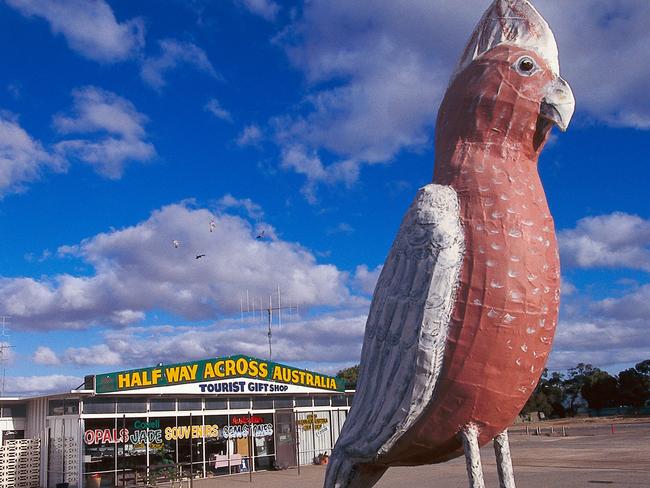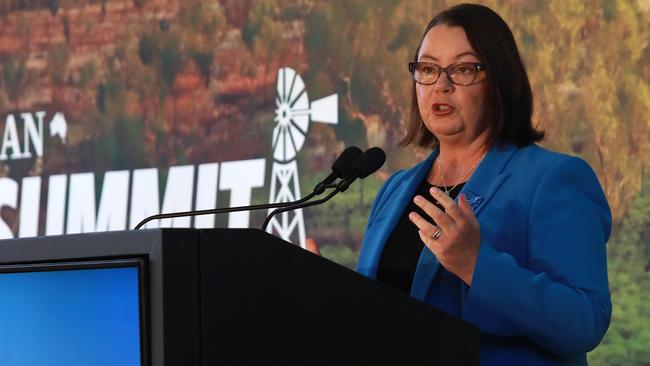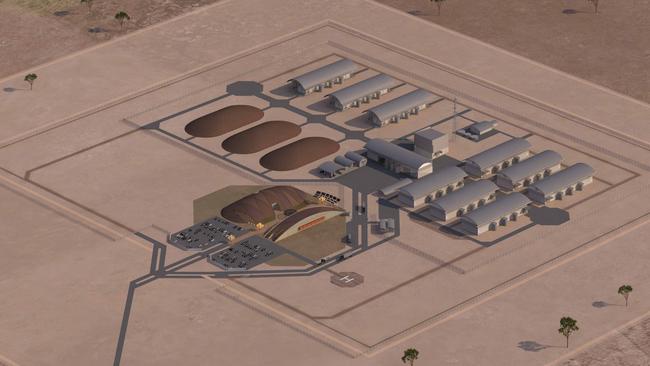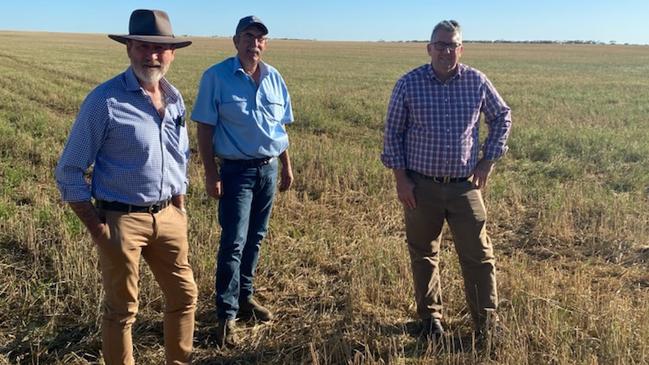In scrapping proposed nuclear waste dump, government also abandons outback town of Kimba
After a thorough seven-year-long consultation process with the people of the Kimba region, the Albanese government is being labelled cowardly in not fighting a Federal Court judgment scrapping a proposed – and wanted – nuclear waste facility.

The tiny outback town of Kimba has long been known principally for the Big Galah, the 8m tall pink and grey fibreglass parrot that greets travellers as they make their way across South Australia’s Eyre Peninsula.
Kimba has now added another big thing to its bow – the big waste of time and money, in the form of the sudden and apparently irreversible decision to scrap its planned national nuclear waste facility.
After a thorough and transparent seven-year-long consultation process with townsfolk, farmers and the Indigenous community, an exhaustive opinion poll putting local support for the project at 62 per cent, and with just shy of $10m already spent, the Albanese government is being labelled cowardly and inept in its response to a Federal Court judgment criticising the process by which former resources minister Keith Pitt approved the project.
Rather than appealing the decision – with the Federal Opposition citing the overriding of the expanded Russian embassy in Canberra as an obvious precedent – the commonwealth has folded its tent and gone home.

Not only would the privately owned farm known as Napandee near Kimba no longer be the site for the facility, there would be no such facility in the Kimba region.
Resources Minister Madeleine King told parliament last week that the commonwealth had made that determination in light of the Federal Court judgment finding Pitt acted with “bias” in championing the Napandee site and that the local Barngala people were not adequately consulted. King also attempted to insist that the decision by the court and now by the commonwealth had no bearing on native title questions, but with the process by which the waste facility had been approved.
Critics of the decision – of which there are many – see it differently, with many saying the issue has ramifications in the context of the debate over the Indigenous voice to parliament, with the grievances of the historic owners who no longer even live on this freehold land in Kimba being given the legal capacity to kill a project of national significance.
As far as local mayor Dean Johnson is concerned, the whole process has been “a massive waste of time”.
Adding insult to injury, Johnson was not even advised of the decision ahead of last week’s statement – and as of Thursday this week was still waiting for any formal and direct communication from anyone in the federal government.
“It smacks of disrespect,” Johnson tells Inquirer. “This was going to generate $300m, 180 jobs in the construction phase, 45 ongoing jobs after that. It meant a lot to the town. We put so much work into it. Almost 10 years of time, money, resources. We spoke to everyone in the community to make sure there was majority support. So much blood, sweat and tears. Total waste of time now, all of it.
“It originally had bipartisan national support so we went into it in good faith believing it was our job to help deliver a project of national importance.”

The mayor’s point about national importance is a vital one because the Australian Nuclear Science and Technology Organisation is on the record as saying Australia desperately needs a dedicated national facility to house its nuclear waste, much of which comes from medicine and is currently kicking around in the basements of city hospitals.
It’s that last point that baffles nuclear experts, who say the people who target these facilities on safety grounds have no understanding of how safe they are – and are blind to the fact the waste is already being stored anyway in suburban and CBD hospital buildings.
One man who cannot fathom the decision to scrap Kimba is associate professor Tony Hooker from the University of Adelaide School of Physics, Chemistry and Earth Sciences. Hooker has a strong background in nuclear safety, having served as the principal radiation advisor to SA’s Environmental Protection Authority.
He says the decision to scrap Kimba jars with the growing public awareness and acceptance around the nuclear industry in SA, where uranium has been mined since the 1970s, nuclear submarines will now be built under AUKUS, and cutting-edge proton therapy technology is being developed at the SA Health and Medical Research Institute.
“The waste facility was going to be another string to that bow,” says Hooker. “The decision seems to be at odds with public opinion but also with opinion on the ground in Kimba. The process that was put in place was a robust one where the proposal was put to a vote with the local community and endorsed.
“Maybe the local Indigenous community was not consulted as well as they should have been – as per the Federal Court ruling – but the fact it all still fell apart and could not be resolved would appear to have ramifications beyond this case.
“My question would be if not Kimba, where? So much of the commentary around all this is based on hysteria. The reality is in other countries there are some nuclear waste facilities that even have visitor centres so that people can go on tours of them. Frankly. I would be happy to have one of these facilities in my backyard if my backyard were big enough.”
Probably the angriest person about all this is the Liberal member for the vast northern SA seat of Grey, Rowan Ramsey, who believes the feds scrapped the project in part to avoid any showdown with an Indigenous community ahead of the voice referendum.
Ramsey says the reaction from locals to the news of its scrapping has further damaged community support for the voice.

“The No vote has been tracking locally at at least 65 per cent but 85 to 90 per cent wouldn’t surprise me,” Ramsey tells Inquirer. “When news of this broke it just lit up like a firecracker.
“Not only has this left ANSTO up the creek without a proverbial paddle, or for that matter a waste facility, it’s thrown a new blanket of doubt over the value of freehold. The land we are talking about here is a privately owned farm. The minister tells me I don’t know the law, but I can’t see anywhere in the judgment where it delineates between freehold title over a farm and the average backyard shed.”
Ramsey says the painstaking process of selecting Kimba and the good faith shown by the community makes its 11th-hour axing harder to bear.
“This process began in 2015,” he says. “That was when I brought the opportunity to the attention of my own community with an intention to nominate my own farm.
“The Coalition government searched the country for a landholder willing to sell a portion of their land to the government for the permanent storage of low-level radioactive waste.
“We screened the nominations for suitability and then surveyed those communities to see if they wanted to host the facility. We then held a series of ballots and eventually both houses of parliament endorsed the government’s decision to site the facility at Napandee in the Kimba District after it returned a vote 61.8 per cent in favour. This is the same majority the same-sex marriage vote enjoyed in a full national plebiscite.”
Ramsey and others tell Inquirer that the commonwealth’s sudden abandonment of Kimba looks suspiciously like an ideological house-clearing exercise ahead of ALP National Conference to avoid fuelling a showdown with the Left over the nuclear question.
Beyond that, with the Albanese government championing a defence alliance that legally obliges us to house nuclear waste from the submarines, the inability to deliver this facility in the middle of nowhere with majority community support augurs badly for the search for future waste sites.








To join the conversation, please log in. Don't have an account? Register
Join the conversation, you are commenting as Logout